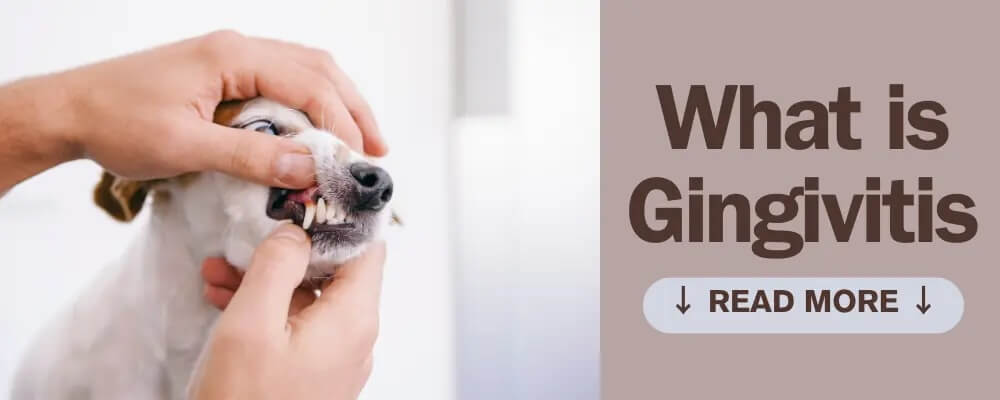
Pets get plaque buildup on their teeth just like people do. In time it will harden into tartar and serve as a source of bacterial infection of the gums, known as gingivitis. Gingivitis is the first stage of periodontal disease.
Gingivitis is an inflammation of the gums caused by bacteria that accumulate in a pet’s mouth owing to plaque and tartar buildup. It is preventable in pets with frequent at-home brushing and professional dental cleanings, just as it is in humans. Unfortunately, many pet owners do not consider their pets’ oral health until it is too late.
Causes of Gingivitis in Pets
Gingivitis in pets is caused primarily by a lack of oral care, though certain pets with crowded teeth, such as toy breeds, are at risk. Food particles and germs build up in cracks between a pet’s teeth and gums when they are not properly cared for, causing inflammation and irritation. As germs multiply, they adhere to the teeth and form plaque, which calcifies and becomes tartar.
The more this occurs, the more the gums are pushed away from the teeth, exposing pockets where more food and bacteria can accumulate. Without adequate cleaning, this will result in periodontal disease and tooth loss.
Signs of Gingivitis in Pets
Gingivitis symptoms in pets may begin with slight inflammation of the gums, but as the condition progresses, symptoms will become more severe and visible. If your veterinarian notices signs of gum disease in your pet, he or she may offer expert teeth cleaning and educate you on how to keep your pet’s dental health at home.
Some of the most common symptoms of gingivitis in pets include:
- Bad breath- if your pet has bad breath, that is probably because they have gingivitis
- Swollen gums
- Gums bleed, especially when brushing
- Plaque buildup, visible as stained teeth
- Pus oozing where they make contact with gums
- Tartar buildup, visible as calcified areas on teeth
- Drooling
- Loose teeth
- Receding gums
- Difficulty eating
- Reluctance to eat
- Signs of pain around the mouth
Treating Gingivitis in Pets
Treating gingivitis in pets begins with a professional teeth cleaning that removes tartar deposits and polishes the teeth. This will aid in the prevention of bacteria adhering to the teeth in the future. In severe situations, portions of the gum tissue may be removed. If a bacterial infection is present, an antibiotic may be recommended.
To avoid gum disease, you should treat your pet’s teeth exactly as you would your own. This will include cleaning and rinsing your teeth regularly. Chewable treats and toys can aid in the removal of plaque from the teeth. Your veterinarian may advise you to use specific toothpaste, gels, or formulations for your pet.
If your pet shows signs of gingivitis, consult your veterinarian about treatment options and how to care for your pet’s oral health at home to avoid additional gum disease.



